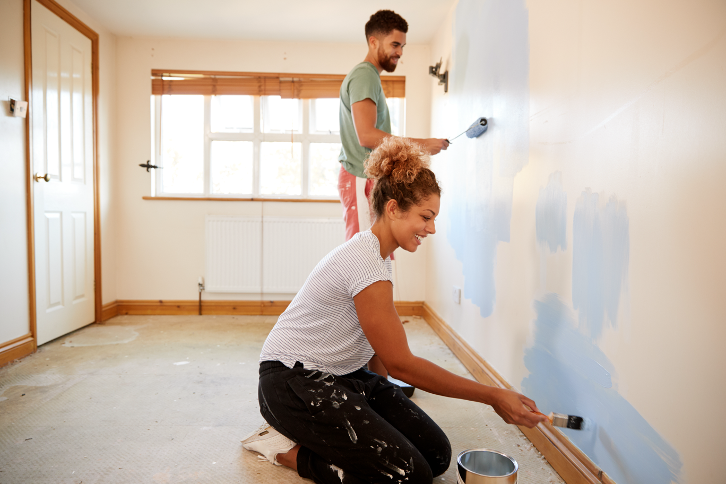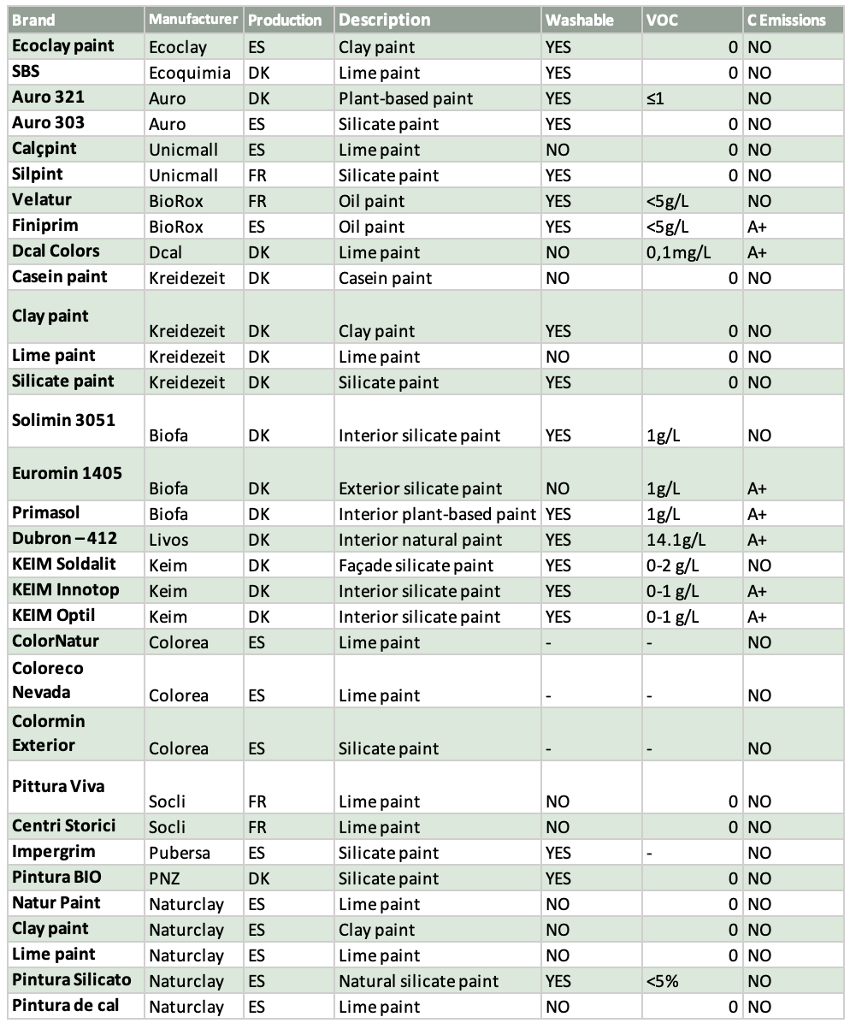Looking for a very simple way of healthening up your home? We are constantly bombarded with information about how important it is to keep a healthy indoor environment. Some requirements could be good air quality, look out for toxic materials or avoid EM radiation. The thing is that many of the measures we need to take to meet all of these points are often complex and way too technical.
Now, one extremely easy tip I can recommend to anyone who wants to improve the quality of an indoor space is to grab a brush and start painting. Believe it or not, you have the power to transform your walls into shields, air filters, humidity regulators, CO2 absorbers and traps for toxic particles! You just need to know how to choose the right paint. Don’t let manufacturers fool you with their confusing labels which, more often than not, follow no established criteria. I encourage you to ask for the paint’s technical sheet that will provide you with its exact recipe (if you don’t find it on the brand’s webpage, you can email them asking for it) and remember these simple tips that will help you chose the right balm for your home’s skin.
Watch out for VOCs
VOCs, or Volatile Organic Compounds, are chemicals used in solvents such as glues, cleaning supplies or varnishes. It is what gives the product, in this case the paint, its fluidity. These VOCs is what’s released while the solvents are drying, it’s that pungent smell we usually get from all of the previous examples while they’re drying. They can cause headaches, dizziness, respiratory problems and, in some occasions, more severe diseases. The most common types of VOCs are acetone, acetic acid, formaldehyde, alcohols and toluene, but the list is huge. To accomplish this first tip, I simply recommend to look for somewhere on the label where it explicitly says that the product is free from VOCs. The good news is that the law is starting to get quite strict about this point and VOC-less paints are becoming increasingly common.
Look for Silicate or Mineral-Based Paints

Silicate paints, also called mineral paints, use silicate as the main binding element. In other words, instead of using industrial solvents and other petroleum products that release VOCs, they use a mineral material (silicate). Unlike conventional paints that use glues and resins to stick the paint to the surface, these paints attach to the wall because of a chemical reaction. This is why people say these coatings are very durable, because the bond is in fact permanent. In addition, because the paint actually penetrates into the surface instead of creating a superficial layer, it maintains the wall’s breathability. Another advantage of silicate is that, because of its alkaline pH, it helps protect surfaces from mold and lichens.
As a final reminder, although silicate is great, don’t forget to thoroughly examine the paint’s recipe. You’ll find manufacturers which assure that their paints are made of 95% mineral materials but you must take a close look at what the other 5% are. If they are hydrocarbons, resins, glues or any VOC, the product is no good. Some brands that I’d recommend if you want to buy natural paints with no (or barely no) VOC content are Biofa, Ecoquimia and Livos.
Look for Lime-Based Paints
Lime is a porous material which helps conserve the transpirability of the walls and regulate humidity. As it has a very high capacity of storing water in its structure, it rarely gives humidity problems as it just keeps in the water vapor and lets it dry with the air that circulates through its pores. Lime is also aseptic, bactericide and fungicide so it prevents the appearance of mold and other microorganisms. Some brands I strongly recommend that sell lime-based paints are Unicmall, DCal and Com-Cal.
Watch Out for Metals
Paints with very bright colors usually use metals for their pigments. The most common metals are lead, cadmium, cobalt and chromium. Some of the metals are bioacumulative (just like mercury), meaning that they remain in our organism, and inhaling them can result in dangerous diseases related to our respiratory system and other organs. Moreover, metals contribute to the alteration of electromagnetic fields so they can also emphasize the negative impact of irregular EM radiation.
Look for Clay-Based Paints

The same as Lime, Clay is a porous material that will conserve the wall’s transpirability and naturally regulates humidity. Another interesting property is that is has a great capacity to ionize the air, which basically means that it can filter toxic particles present in the air and it liberates negative ions, which are extremely healthy for our body. Clay has a considerable content of water and water has a high specific-heat coefficient, which makes this material a great thermic insulator. Because of its high density, it has also been proved to be a good acoustic insulator too.
So, as you’ve seen, clay is a great material to have at home but to fully enjoy all of the properties previously described, I’d say it’s better to consider coating the wall with a clay mortar or prefabricated panels rather than just using it to paint over your wall with a brush. Both these clay panels and clay-based paint you can buy them at Ecoclay, which is an enterprise who has been working in this sector for many decades and can offer huge expertise if you need advice choosing the product that best fits you.
Look for Graphite Content
I wanted to briefly mention graphite in this article as it has the capacity of shielding us against electromagnetic radiations, making it a really interesting material to have in our paint choice. If you want to know more about how shielding with graphite paints works, you can read about it on one of my previous articles. There is a paint brand named Graphenstone that contains graphene and other healthy materials like lime. The greatest part of their products and what makes them one of my favorite brands is that, besides being breathable and VOC free, they are made to absorb CO2 and other toxins.
Don’t be fooled by labels!
The legislation applied around labels is quite loose and unclear, so I’m going to list a few examples of the most frequent and confusing ones you might find out there:
· The “Ecologic” label allows the presence of VOCs and does not warrant that all substances are natural.
· The “Natural” label ensures that at least 95% of the components are natural but the other 5% could still be tremendously toxic.
· Acrilyc components have been classified by the EU as cosolvents (meaning that they’re somehow not considered solvents) so they can be present in paints labeled as “Solvent-free”. The effects of these substances on our health are just as bad as VOC’s so we should avoid them at all costs.
· The “Ecolabel” is an EU label that admits a notable content of up to 30g/L of VOCs
For those of you who’ve made it up to here, I’m guessing you might feel a little overwhelmed with the amount of information so, to make your life easier, here you have a table from an article on Ecohabitar that compares the characteristics of different paint brands and their products.

Although the tips given in this article focus on human health impact, truth is that when we decide to base decisions on this point, we often become more sustainable at the same time. Healthy solutions are usually environmentally friendly and viceversa. So for those interested in improving the biohabitability of your homes I strongly encourage you to do so! The positive impact will be bigger than you probably imagine.



